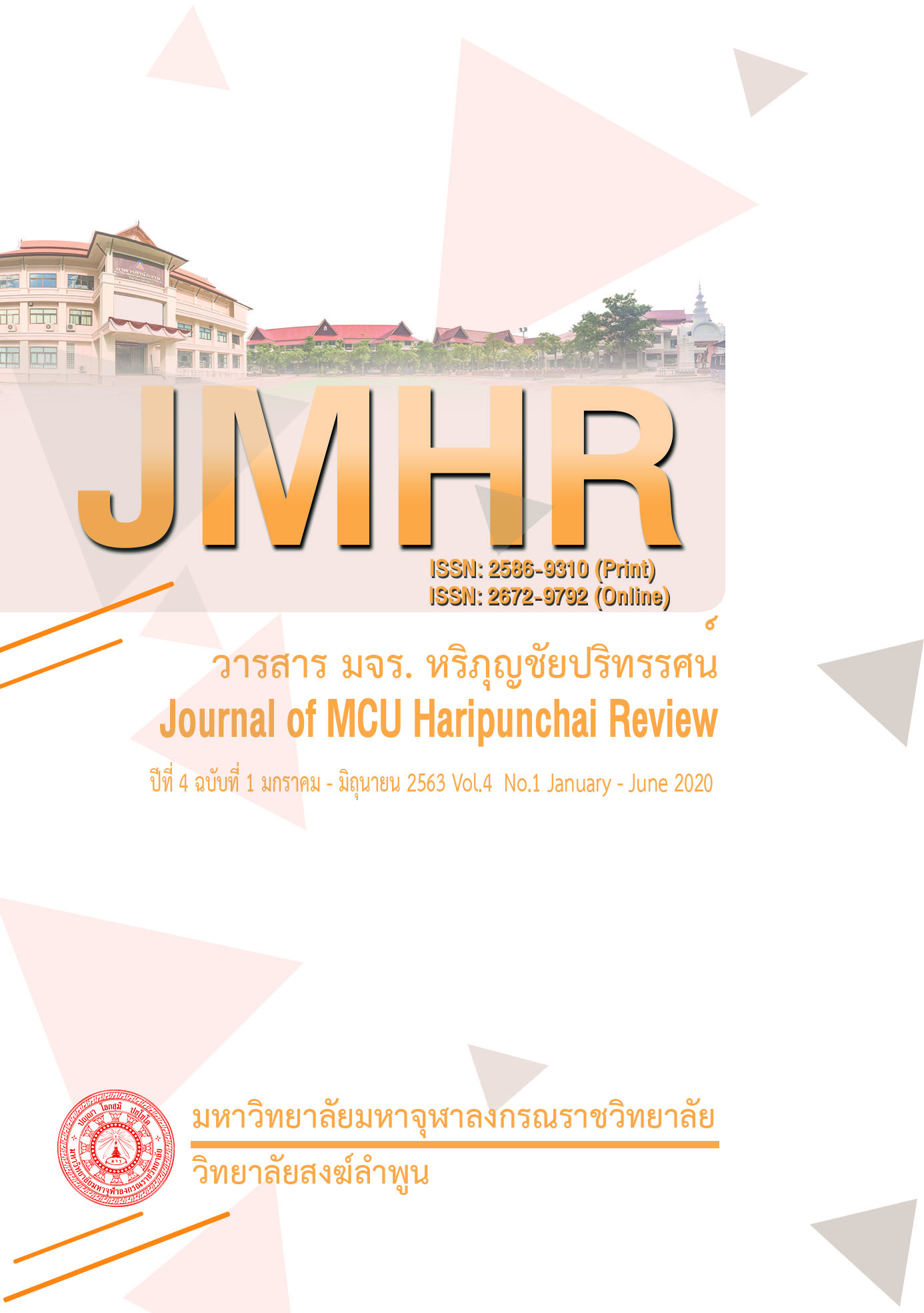9 Pagodas in 9 Districts: From Myth to Buddhist Tourism Network Connections in Phayao
Main Article Content
Abstract
“9 Pagodas in 9 Districts: From the Myth to Buddhist Tourism Network Connections in Phayao” is the mixed-method research, both qualitative and quantitative methodologies, were applied in this study by using questionnaire, in-depth interview as well as small-group seminar in order to get the accurate results according to three main research objectives; 1. To study historical information of nine pagodas in 9 districts of Phayao province, 2. To evaluate tourist potential of nine pagodas in 9 districts of Phayao province, and 3. To present network connection strategies of nine pagodas in 9 districts of Phayao province which were (1) Jom Thong pagoda of Meung Phayao district (2) Doi Khum pagoda of Chiang Khum district (3) Jom Krai pagoda of Dokhumtaidistrict (4) Jom Koh pagoda of Mae Jai district (5) Doi Yourk pagoda of Pong district (6) King Keang pagoda of Jun district (7) Phu Por padoda of Chiang Mhoun district (8) Lan Tia pagoda of Phu Kam Yao district and (9) Phu Sang pagoda of Phu Sang district. The results revealed as follows.
All Phayao temples with their pagodas contained ancient holy Buddha's relics which were faithfully worshiped by local people. These temples were the place where one of the parts of Buddha and his disciples’ relics were enshrined, especially, his holy trimmed hair. According to some pagoda legends, Buddhism propagation journey of the Lord Buddha and his disciples was mentioned in these places. This belief came from Pha Jao Leablok legend. The overview of tourist potential of nine pagodas in nine districts was indicated that all of them had average Buddhist tourism potential level (x̄ =3.36). Divided Buddhist tourism potential in many aspects, the results revealed as follows. The first aspect; tourist value, main factors, and attractions, reached high level (x̄ =3.77). The second aspect was about supported budget and facilities. In the overview, the tourist potential reached only average level (x̄ =3.24). And the third aspect was about the access of Buddhism tourist attraction. The finding indicated that tourist potential overview also reached average level (x̄ =3.09). The network connection strategies of nine pagodas in nine districts were collaboratively determined by researchers’ team and related networks as follows. The first strategy was about knowledge base/ body of knowledge development including Buddhism tourist identity building. The second strategy was about organizing routes and tourist Buddhist activities. The third strategy was about enhancing Buddhist art’s knowledge body. And The fourth strategy was creating management and administration network collaboration.
Article Details
References
__________. (2552). ตำนานพระเจ้าเลียบโลก: การศึกษาพื้นที่ทางสังคมและวัฒนธรรมล้านนา ภูมินาม ตำนาน ผู้คน. เชียงใหม่: ธารปัญญา.
พระใบฎีกาเสน่ห์ ญาณเมธี. (2555). “การศึกษารูปแบบและกระบวนการจัดการท่องเที่ยวทางพระพุทธศาสนาในภาคเหนือ: กระบวนการเรียนรู้สู่การสร้างสรรค์เชิงประวัติศาสตร์และวัฒนธรรม” (รายงานวิจัย). สำนักงานกองทุนสนับสนุนการวิจัย.
พระมหาสุทิตย์ อาภากโร (อบอุ่น) และคณะ. (2555). “การพัฒนารูปแบบและกระบวนการจัดการท่องเที่ยวทางพระพุทธศาสนาในประเทศไทย” (รายงานการวิจัย). สำนักงานกองทุนสนับสนุนการวิจัย.
พระมหาเสรีชน นิริสฺสโร (พันธ์ประโคน) และคณะ. (2556). “การจัดการท่องเที่ยวทางพระพุทธศาสนาในประเทศไทย” (รายงานการวิจัย). สถาบันวิจัยพุทธศาสตร์ มหาวิทยาลัยมหาจุฬาลงกรณราชวิทยาลัย.
พระสุธีรัตนบัณฑิต (อาภากโร) และ พระใบฎีกาสัญญา อภิวณฺโณ (สดประเสริฐ). (2560). “ยุทธศาสตร์การท่องเที่ยวทางพระพุทธศาสนาและวัฒนธรรมของไทยและอาเซียน”. วารสาร มจร พุทธปัญญาปริทรรศน์. 2 (1) : 150 – 151.
แม่ชีกฤษณา รักษาโฉม และคณะ. (2555). “รูปแบบและกระบวนการจัดการการท่องเที่ยวทางพระพุทธศาสนาในภาคตะวันออกเฉียงเหนือ: กระบวนการเปลี่ยนแปลง ‘เส้นทางบุญ สู่ เส้นทางธรรม’” (รายงานวิจัย). สำนักงานกองทุนสนับสนุนการวิจัย.
วงศ์ระวิทย์ น้อมนำทรัพย์ และ พยอม ธรรมบุตร. “แผนยุทธศาสตร์เพื่อพัฒนาการท่องเที่ยวเชิงพุทธศาสนาอย่างยั่งยืนในจังหวัดนครปฐม”. วารสารวิจัยสหวิทยาการไทย. 11 (4), 49 – 56.
สุจิตต์ วงษ์เทศ. (2527). เมืองพะเยา. กรุงเทพฯ : มติชน.
__________. (2538). ประวัติศาสตร์ สังคมและวัฒนธรรมเมืองพะเยา. กรุงเทพฯ: มติชน.
สุรพล ดำริห์กุล. (2539). แผ่นดินล้านนา. กรุงเทพฯ : เมืองโบราณ.
สำนักงานวัฒนธรรมจังหวัดพะเยา. (2558). เที่ยวพะเยา เมืองภูกามยาว อารยธรรมโบราณแห่งเมืองทะเลสาบกลางหุบเขา. พิมพ์ครั้งที่ 2. พะเยา : สุทธิโรจน์ พริ้นติ้ง.
Thaiheritage. (15 เมษายน 2561). จังหวัดพะเยา. [ออนไลน์]. แหล่งที่มา : http://www.thaiheritage.net/nation/oldcity/ phayao1.htm


